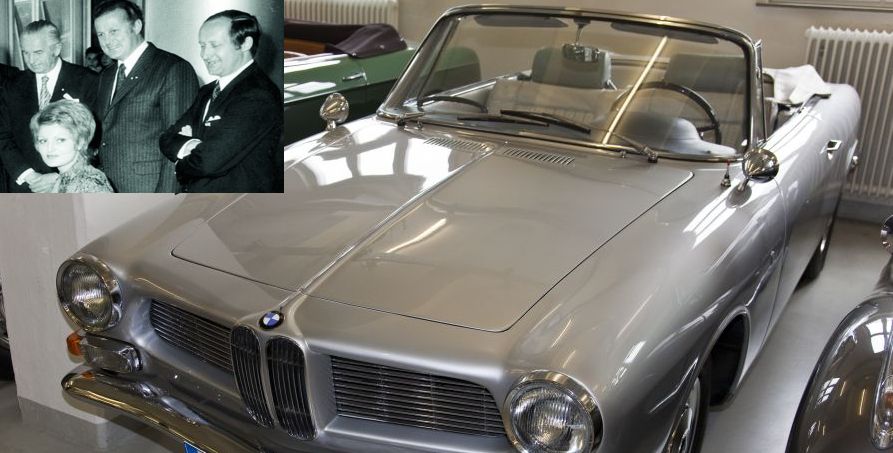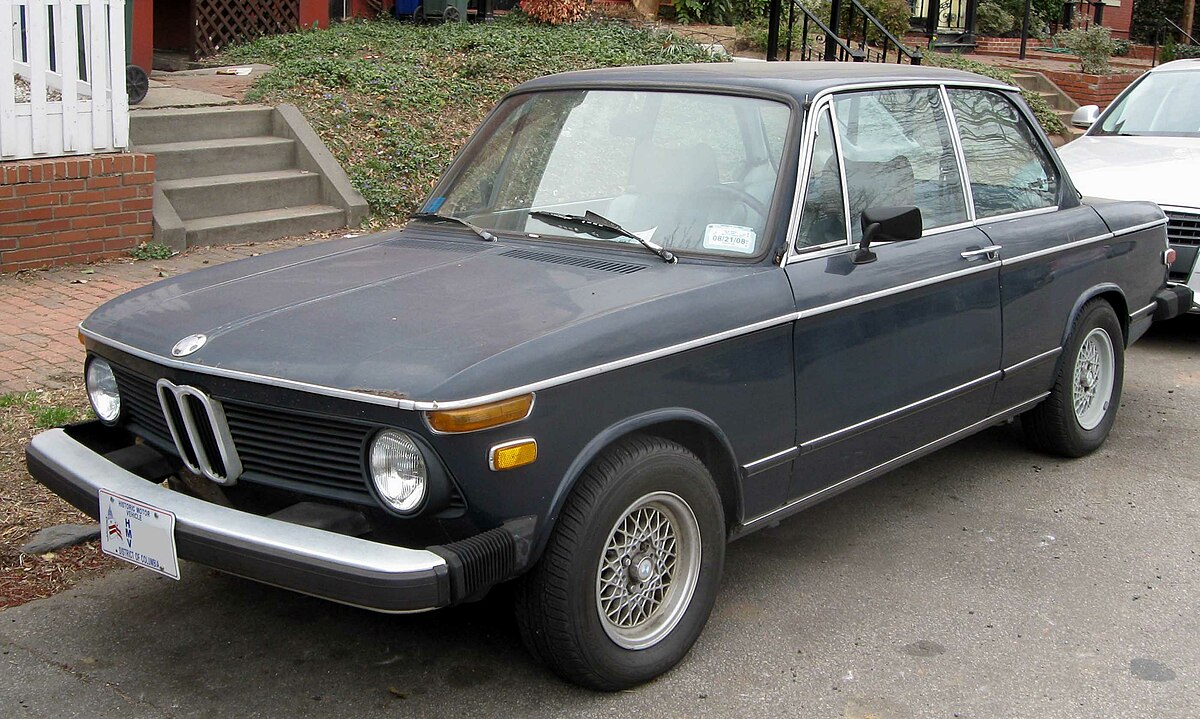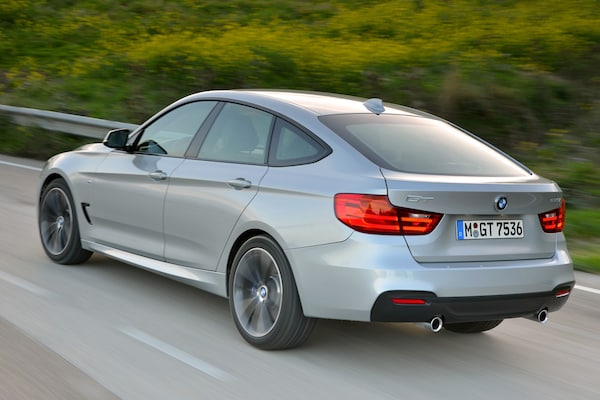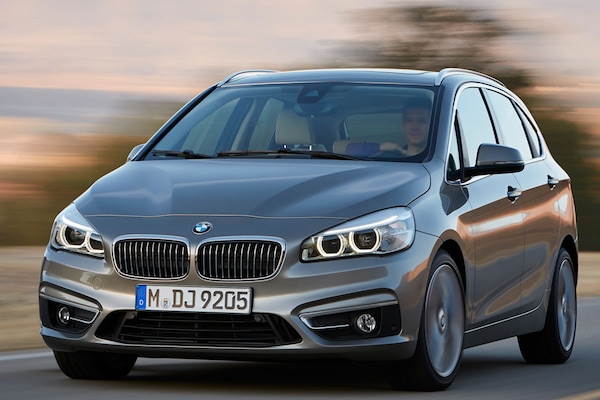
Herbert Quandt Family & BMW
Read the story of Herbert Quandt and BMW, how BMW was saved.
Herbert Werner Quandt (22 June 1910 – 2 June 1982), was a German industrialist who is regarded as having saved BMW when it was at the point of bankruptcy and made huge profit in doing so.
The Quandts are descendents of a Dutch rope-making family who had settled in Wittstock and Pritzwalk, between Berlin and Schwerin, in the 18th century.
BMW was an ailing company and in 1959 its management suggested selling the whole concern to Daimler-Benz. Herbert Quandt was close to agreeing to such a deal, but changed his mind at the last minute because of opposition from the workforce and trade unions. Instead he increased his share in BMW to 50% against the advice of his bankers, risking much of his wealth. He was instrumental in reversing the company’s fortunes.
BMW was already planning its BMW 1500 model when Quandt took control. It was launched in 1962 and established a new segment in the car market: the quality production saloon. It occupied a position between the mass production car and the craftsman-built output of the luxury producers. BMW’s sophisticated technical skills put it in a strong position to fill this niche. It was this model that put BMW on the path to success.

在最新出炉的2014全球汽车行业富豪排名中,与2013年榜单一样,宝马汽车集团控股家族——匡特家族(Quandt Family)的苏珊娜·克拉滕以174亿美元、总排名第51名,再次蝉联全球汽车领域最富有的人士,而中国汽车界首富依旧是魏建军,以69亿美元位列总排名第196位、全球汽车行业第6位。据悉,在福布斯发布的中国2014年十大富豪中,魏建军位列第8位。2013年位列全球汽车行业第十位富豪的万向集团董事长鲁冠球跌出前十,其位置被比亚迪董事局主席王传福替代。
而在汽车业这几大巨富中,财富增长最快的当属特斯拉公司CEO 埃伦·穆斯克(Elon Musk)。据悉,由于特斯拉销量和股价大幅攀升,穆斯克财富总额从去年的27亿美元大幅跳升至84亿美元,排名从汽车业第13、总排名第527提高至排名汽车业第4、总排名第158位。
BMW sold 1,96 million cars in 2013.
BMW’s revenue in 2013 is 76 billion euro.
BMW’s profit in 2013 is 5,3 billion euro.


Herbert Quandt (left) and a few BMW shareholders.


Herbert Quandt: The Man Who Saved BMW
The post-war era was especially hard for the German automotive industry. One of the most troubled car companies was BMW, which suffered from a weak line-up of morally old and stylistically out-of-date models. Even though the so-called “Baroque Angels” 502 sedans were still very much technically competent and the 507 roadster had been a huge success as a halo model, BMW was still on the down low. The main problem was that the 502 line of models were beautiful but they looked too pre-war, while the 507’s success on the other hand didn’t help it stop losing money on each and every car sold.
The only cars still keeping the company alive in the late fifties were the Isetta crossover midget and the sporty 700. BMW engineers and designers already had some new models on the drawing board but unfortunately BMW was losing money. Fast. So fast, that when 1959 came, the Bavarians were close to declare bankruptcy. Few people know that Daimler-Benz, which at the time was the largest German automotive company, wanted to acquire the ailing Bavarian Motor Works. It wasn’t about killing the competition though, BMW had nothing on Daimler in those years. The plan consisted of BMW to be converted into a supplier of car bodies for Mercedes-Benz cars.
The head of the BMW management board at the time, Hans Feith, came one day at the end of that faithful year and presented a proposition to the board. Did we say proposition? It was more like an ultimatum. It was either they would declare bankruptcy or let the company be bought/eaten alive by their future arch-enemies, Daimler-Benz. Mr. Feith was also a representative of the Deutsche Bank, which by chance was one of BMW’s principal creditors. Also by chance, Deutsche Bank was one of the greatest supporters for the company buy-out by Daimler. Some would say that by pure luck, other thanks to the talent and wisdom of one man, BMW escaped both the acquisition AND the bankruptcy.
Picnic with an Isetta. Doesn’t this look like a starting scene for a gang bang flick from the 1950s?⌕ Picnic with an Isetta. Doesn’t this look like a starting scene for a gang bang flick from the 1950s?On a meeting which took place on the 9th of December 1959, the acquisition by Daimler-Benz had almost won the vote of the BMW board. A few disgruntled shareholders managed to adjourn the meeting just before the board could make the final decision. One of those shareholders was Herbert Quandt. Initially in favor of the Daimler-Benz takeover, Quandt thought about the trade unions and workers who were opposing such a measure, thus creating instability in the factories. After some careful thinking and against ALL advice from its bankers, BMW’s white knight started to quietly increase his stake in the company. After his number of shares rose to almost 50% he secured an agreement with the state of Bavaria that would allow him to purchase BMW.
The models which were already on the drawing board started to come alive thanks to BMW’s newly found financial independence. The “Neue Klasse” (New Class) designs were actually the basis that would form the modern BMW cars. The car that actually started the BMW revolution was the small but feisty 1500, launched at the Frankfurt Motor Show in 1961, not even two years after the collapse-that-almost-happened.
The 1500. The first BMW with a “Hofmeister kink” and the car that managed to secure BMW’s future.⌕ The 1500. The first BMW with a “Hofmeister kink” and the car that managed to secure BMW’s future.Herbert Werner Quandt had been born on the 22nd of June, 1910, in Pritzwalk, a small town that is currently the modern federal state of Brandenburg. His father was a business man who had built a considerable fortune as a supplier to the Wehrmacht in the first World War and then had increased his wealth buying major stakes or acquiring several companies. Herbert didn’t have quite a happy childhood while growing up, developing a retina disease that almost left him blind and his mother dying when he was eight.
This didn’t stop BMW’s future hero to establish himself as an even better businessman than his father, increasing the family wealth over the years to include stakes in a lot of major factories in several European countries. When his father died in 1954, the keys to the empire were shared by him and his younger brother, with Herbert emphasizing on the automotive part of the family investments.
After the 1959 close-call, BMW started to rise and Quandt helped paving the way for its ascent. Two years from the 1961 launch of the soon-to-be-successful 1500, the 1800 model appeared, transforming BMW into a manufacturer that kept up with the times. In the meantime, Quandt was still the power behind the machine, but he believed in decentralized authority, so he left the running of BMW to others around him until 1969. That’s when he made his second most brilliant choice (after saving BMW) when he appointed Eberhard von Kunheim as managing director.
von Kunheim was the man who transformed BMW from a regular brand into a premium one that would challenge Mercedes-Benz itself in a not-too-distant future. Herbert Quandt died on the 2nd of June, 1982, less than three weeks before his 72nd birthday. Apart from the huge wealth shared by his children now, his legacy is a company that probably has one of the largest fan-base around the world. He is the man to which any M3 or M5 driver should be thankful to.

Leave a Reply